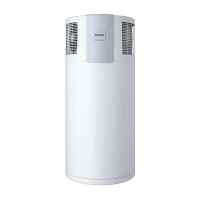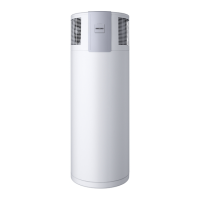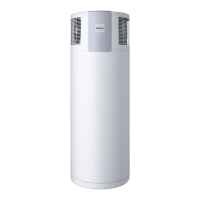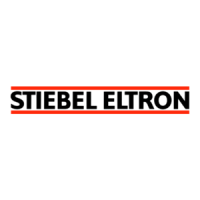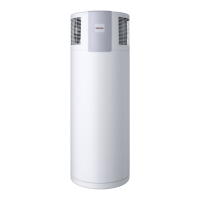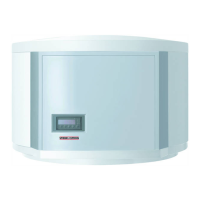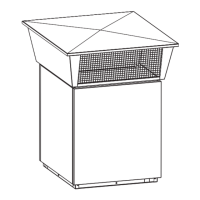INSTALLATION
Commissioning
www.stiebel-eltron.com WWK 223-303 electronic | 23
ENGLISH
Example 2 : Photovoltaic signal via on-site relay and phase
routed outside the appliance
Note
The relay in the inverter must meet the following re-
quirements:
- Potential-free relay (240VAC / 24VDC, 1A) with
N/O contact
- Adherence to safety regulations and standards for
safety extra low voltage
- The switching output must be programmed so that
the relay closes or opens if certain limits are exceed-
ed or undershot (inverter output level).
If necessary, check with the inverter manufacturer wheth-
er the product meets the stated criteria.
X0
2
L
L
N
N
PE
PE
L
N
PE
GNYE
BU
BN
1
1
2
1
X3
2
3
3
1
1
2
D0000059155
1 Inverter ( floating contact )
BN Brown
BU Blue
GNYE Green/yellow
The inverter power feed is usually located at a central distribution
point (e.g. in the main fuse box).
10.4 Assembling the appliance
Note
Refit the appliance cover after completing your work. See
chapter "Maintenance and cleaning/ Fitting the appliance
cover").
11. Commissioning
11.1 Initial start-up
Note
Fill the DHW cylinder before switching on the power sup-
ply to the appliance. In case the appliance is operated
with an empty DHW cylinder, it is equipped with boil-dry
protection.
Note
Following an interruption of the power supply, the
compressor operation remains blocked for at least one
minute. The PCB delays electronic starting by a minute,
during which the appliance goes through its initialising
process.
If the compressor subsequently fails to start, it may be
blocked by additional safety devices (motor overload relay
and high pressure switch). This block should lift after 1
to 10 minutes.
11.1.1 Filling the DHW cylinder
Fill the DHW cylinder and vent the pipework by following the
procedure below:
f Close the drain valve.
f Open all DHW draw-off points and the shut-off valve in the
cold water supply.
f Close the DHW draw-off points as soon as water starts to
emerge from them.
f Check the safety valve by leaving it open until water runs out.
11.1.2 Settings / function check
f Switch the power supply ON.
f Check the appliance function.
f Check the function of the safety assembly.
Following function check completion, reduce the set DHW temper-
ature for more energy-conscious appliance operation.
f Establish the customer's comfort requirements and adjust
the set DHW temperature accordingly. For hygiene reasons,
never set the DHW temperature below 50°C.
f Check whether the “runtime-dependent rapid heat-up”
function should be enabled on the basis of the anticipated
air intake temperatures and the expected DHW consumption
(see chapter “Settings / Settings / Runtime-dependent rapid
heat-up”).
When the air intake temperature drops, the heat pump's heating
output is reduced and the heat-up time is extended. In the case of
outdoor installation, we recommend activating the "runtime-de-
pendent rapid heat-up" function during the winter months and as
required in spring/autumn when outside temperatures are low.
Note that DHW heating with the electric emergency/booster heater
uses more power than just using the heat pump.
To prevent excessive power consumption, disable the function
in summer and in spring/autumn if at all possible. To avoid in-
creased power consumption, only reduce the factory-set time for
runtime-dependent rapid heat-up if necessary.
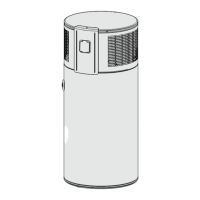
